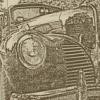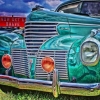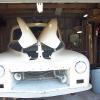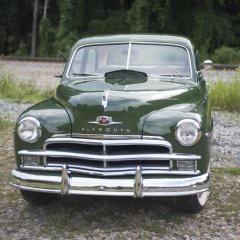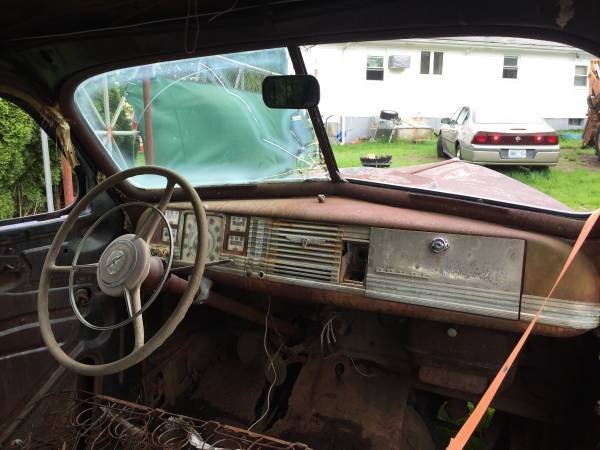-
Posts
60 -
Joined
-
Last visited
Reputation
3 NeutralAbout BIGBAND39
- Birthday 10/05/1982
Profile Information
-
Gender
Male
-
Location
Cranston, RI
-
My Project Cars
Current Ride<br />
<br />
1939 Dodge D-11 Luxury Liner<br />
<br />
Former Mopar Rides<br />
<br />
1953 Dodge Meadowbrook<br />
1949 Dodge Wayfarer<br />
1970 Dodge D-100<br />
1967 Plymouth Fury III
Converted
-
Location
North Providence, RI
-
Interests
Mopar
Recent Profile Visitors
1,369 profile views
-
Sunday driving home from my brother's wedding, I went to check my oil and realized I was about a quart low. I threw in some STP w30 and went on my way. Shortly after, I noticed some performance issues and some very noticeable clacking upon deceleration. When holding the throttle steady at what seems to be about 2500 rpm , I get the noise consistently. The noise seems to be coming from my valve train. It's much more noticeable from inside the car. When I went to further investigate the issue, I reached my hand in to rev the engine up at the carb and, while being nowhere near the ends of my wires, I got a serious jolt. Has anyone experienced any clacking noises with wires that were at the end of their useful life? Also, has anyone had the same noise with different brands of oil? I do not remember the oil that I put into the car when it was last changed but I do know it was also w30. Thanks everyone as always for any information you can offer!
-
After recently moving, I have misplaced most of my Dodge literature and need the valve lash for a 1939 D-11. I believe it has the original 218. I have a Plymouth service manual but it doesn't reference the 218 until 1942. Would the specs be the same?
-
Two questions vintage Mopar fans....... 1. What from a 1940 Dodge would fit my 39? Looks like doors and glass would be the same. Hood halfs and fenders? Mechanically, I know everything is spot on. 2. Would any of my pre-WWII Dodge brethren be interested in any parts? Yes, I know it's a sin not to find a home to restore this but parts need to come from somewhere. :-/ Not purchased yet but considering.
-
I always had a vibration but, to be honest, I would expect that out of a 75 year old car doing 55. The vibration definitely became more noticeable after the rear main seal was done. I personally thought it was a driveshaft issue possibly from it not being properly indexed. This new mechanic is dead set on it being engine related. It still doesn't seem to make sense as, when I push in the clutch and wind the motor down I still get vibes at high speeds.
-
I was under the car with my mechanic when it was pulled apart. I wasn't there when it was reassembled. I appreciate the suggestion but, although he may not be 100% with older vehicles, he is very thorough. I think he would have tightened everything up. If they should be tightened to a specific torque spec, that's a different story. I'm not sure if that would make a difference.
-
I do have a parts manual! I just hadn't made my way home yet to reference. So, comparing the two, the harmonic balancer is a crankshaft vibration dampener. Looking at that post and others I was confused that some 218s came with dampaner and others didn't. This is a non-Fluid Drive three speed set up.
-
Does the 218 of this era have a harmonic balancer with an option for the crankshaft vibration dampener?
-
After talking to the mechanic he did say that if the flywheel only bolts on one way that it's likely not the culprit. I sat in the car today and, at about 1500rpm, she has a very noticeable vibration. He tells me that he thinks it's in the motor. He also mentioned having the harmonic balancer rebuilt at a cost of $200+ without labor. Funny enough, I drove the car today and the most noticeable vibes hit when I'm driving 50+ mph. If I take the engage the car, the vibes persist. If this was a engine balance issue, wouldn't the vibes go away when the clutch is in allowing the engine to wind down?
-
Could one simply unbolt the flywheel from the crank and rotate it until the vibrations go away, Don? After talking to the mechanic he did say that if the flywheel only bolts on one way that it's likely not the culprit. I sat in the car today and, reving at about 1500rpm, she has a very noticeable vibration. He tells me that he thinks it's in the balance of motor. He also said it wasn't likely the harmonic balancer due to my idle being so smooth. He said the rebuilt would be at a cost of $200+ without labor. Funny enough, I drove the car today and the most noticeable vibes hit when I'm driving 50+ mph. If I take the engage the car, the vibes persist. If this was a engine balance issue, wouldn't the vibes go away when the clutch is in allowing the engine to wind down?
-
I just came back from my mechanic after telling him about what I thought was a driveline vibration. He informed me that the vibration also occurs when the vehicle is in neutral; that it can be felt in the wheel. He asked me what work I have had done since my purchase and I explained the my rear main seal was replaced. He had asked if the last mechanic had indexed the flywheel and "flywheel cover" and I told him that I didn't remember him doing so. Can anyone explain in layman's terms exactly what indexing and balancing the flywheel entails? I could imagine that if it was out of balance, it would cause a vibration. Also, the engine was rebuilt years before I bought the car. I would guess that a professional shop doing the job would also balance the engine during the rebuild. Is this engine internally or externally balanced? Thanks for any insight. As a shade tree mechanic, I've never come across this sort of stuff.
-
My '39 is like that too. This comes from the factory service manual for a '38. I'm trying to find my '39 supplement, which should be much more similar to your '40. Let me know if this helps.
-
I had thought of that too, but figured that if the hoses were collapsing that they would do it all the time. When she first starts off, she runs really strong for a while with no issues.
-
Thanks for the tip, Plymouthy. I plan on running her tonight and keeping an ice pack handy to see if that makes a difference if the situation arises again. I wasn't aware that it would be evidence if the coil was not throwing the needed strength of spark that it's supposed to. I will also check on that as well. I realize it must be frustrating when the newbies come online and ask these questions. With some luck, I'll find a solution and I'll be able to help the newer guys coming online after me.
-
My coil looks to be recessed into the firewall and held by the same clamp that Tod had in his picture of the aftermarket coil.


